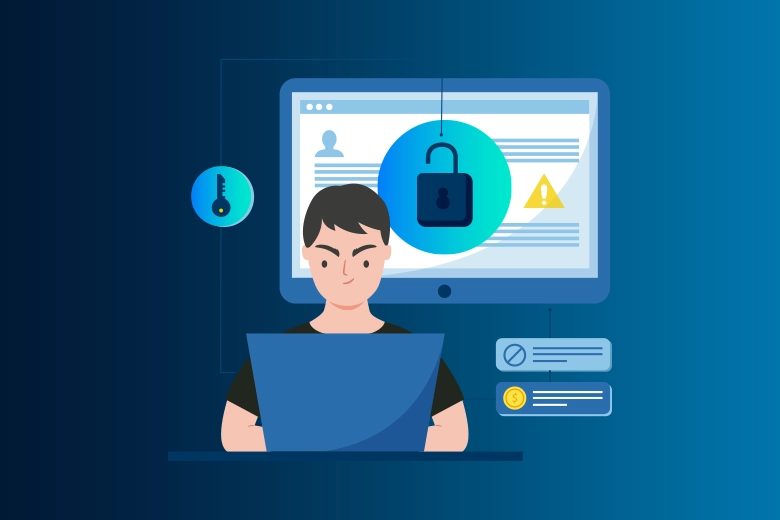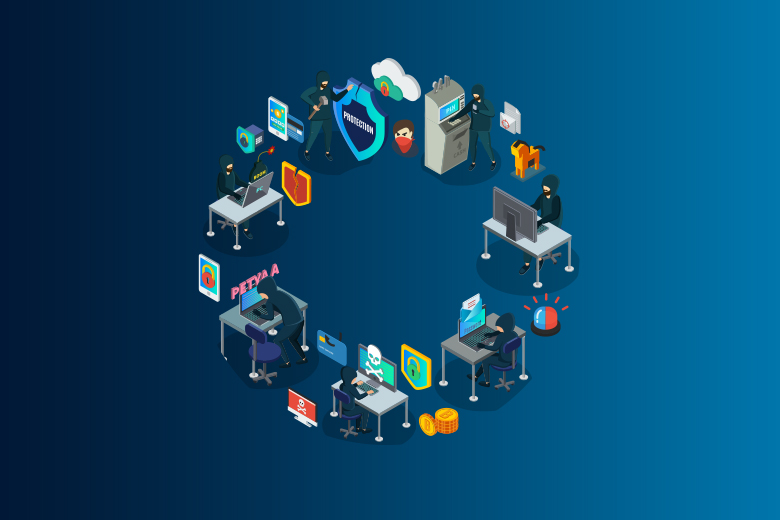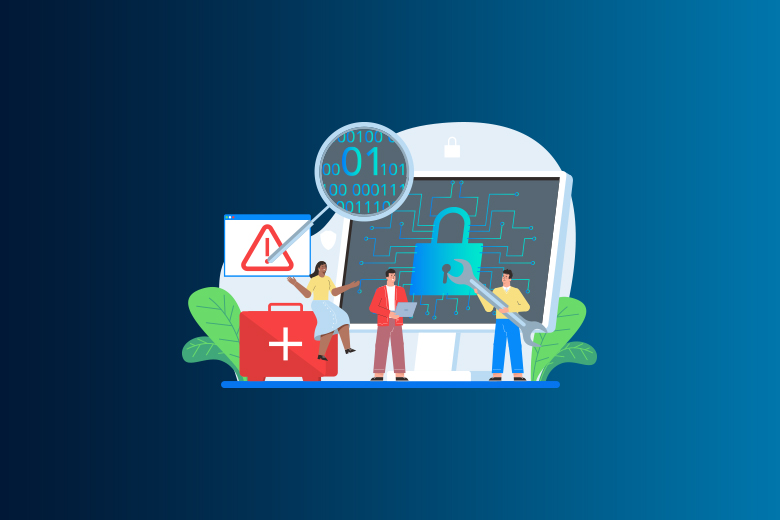10 January 2024
SafeAeon Inc.In the complicated world of IT security, outside dangers get the most attention. But the dangerous truth about insider threats—threat actors that come from inside an organization—cannot be ignored. It takes a deep knowledge of and use of best practices for effective detection to find out who these internal threat actors are. A study by the US Secret Service, the CERT Coordination Center (CERT/CC), and CSO Magazine showed that insiders were responsible for 20% of all known computer crimes. These breaches are appalling because the insiders knew about secret systems and could get around security measures.
In one case, financial theft cost the company almost $700 million, and in another, IT sabotage cost $10 million and caused a lot of people to lose their jobs. The CERT/CC's "Commonsense Guide to Prevention and Detection of Insider Threats," which looks at more than 150 cases of malicious insider actions, shows how important it is to understand these types of threat actors. This guide shows you the patterns, habits, and techniques you need to find and stop these sneaky people.
Who were the insiders?
Trends from the past few years show that the types of people who do IT sabotage have changed. In the past, these people were mostly men who worked in technical jobs like system managers. However, new data shows that their profile is more diverse. The gap between men and women in tech jobs has been closing. As of 2022, the U.S. Department of Labor's Bureau of Labor Statistics found that men were less likely to work in computer and math-related jobs. As a result, the focus on gender as a major factor is less relevant today, even though technical expertise is still a trait that these insiders share. Insiders are also just as likely to be current employees as they are to be former workers.
What made them do that?
New studies show that the reasons people do IT mischief have changed over time. Although anger and desire for revenge are still important, they are not as important as ideological views, cash incentives, and coercion. Negative events at work are still triggers, but modern organizational problems like arguments about remote work and cybersecurity policies are also playing a role.
How did they get in?
Attacks are smarter and use a wider range of techniques. People still often get in without permission by using accounts that have been hacked, but more and more advanced cyber tools and methods are being used. AI and machine learning are being used more and more to start attacks. Attackers are relying more on social engineering to get in than using their own identities, which is a small drop from the previous year. You can use backdoor accounts and more complex tech tools, like advanced viruses and ransomware, more often.
Actions to Get Ready
Insiders now do a bigger range of technical things to get ready. Aside from writing and putting in logic bombs, they are more likely to take advantage of weak spots in networks and put in complex software long before an attack. More and more often, encryption is used to hide these getting-ready steps, thus essential to follow best practices or methods for detecting threat actors.
Finding and identifying things
More and more, advanced cybersecurity measures, such as AI-based anomaly monitoring systems, are needed to find these kinds of attacks. Attacks are getting smarter, so it's less usual for system irregularities to be used for manual detection. It has also become harder to spot people who are insiders. Attackers are getting better at hiding their tracks and changing logs, so it takes more advanced forensic methods and machine learning algorithms to look at logs and find out where an attack came from.
What Are the Best Practices For Detecting Insider Threats?
Detecting insider threats effectively is a critical aspect of maintaining robust security in any organization. Organizations can greatly improve their ability to detect and prevent insider threats by integrating these practices. This enhancement not only helps in safeguarding critical assets but also ensures the maintenance of a secure working environment. Here are some best practices that organizations should consider:
- Do regular risk assessments for the whole company: To make sure that all of their information is safe, businesses must first figure out what their most valuable assets are. After that, they should make a plan for how to handle risks. This plan is very important for keeping these assets safe from threats inside and outside the company.
- Give Your Staff Regular Security Training: Make sure that all of your workers get regular security training. For safety reasons, every person needs to know the rules and how to follow them. They need to know why these rules are important and how to follow them. Also, workers need to know what will happen if they don't follow these safety rules.
- Use Least Privilege and Duty Segregation: To make duty separation work, people should only be able to access the tools they need to do their jobs. This method makes sure that they follow the concept of minimal privilege.
- Strictly manage passwords and accounts: Accounts that have been hacked can get past both human and automatic defenses against threats from inside the company. It's very important to be very careful with accounts and passwords.
- Record and Audit Employee Online actions: It is important for a business to keep track of, review, and log employees' online actions regularly. This process helps find and look into strange actions by insiders. In this way, it helps keep bigger problems from happening.
- More control should be given to system managers and privileged users: People who are system managers or have other special rights need extra care at work. This is because they are usually in charge of keeping records and keeping an eye on things.
- Take steps ahead of time to protect yourself from malware: System directors or other powerful users could put in harmful place code, like logic bombs. To stop these sneaky strikes, there should be early warning systems in place.
- Set up multiple layers of defense against outside attacks: Protect yourself from outside attacks by putting up multiple layers of defense. Insiders may feel less watched when they are far away, so rules for remote access need to be well thought out and closely followed.
- Notice and Deal with Weird or Upsetting Behaviors: Companies need to keep an eye on what their workers do online and any strange or worrying behavior that happens at work. It's also important to make it easy for workers to report this kind of behavior. There should also be ways for management to follow up on these comments.
- Don't let employees in right away when they quit: When an employee leaves, they should no longer be able to access any of the company's digital or physical assets.
- Keep Data for Investigative Uses: When looking into something, it's important to keep data. If there is an insider attack, you need to be able to find the attacker and stop them.
- Set up safe ways to back up and recover data: Set up safe ways to back up and restore your info. Businesses need to get ready for problems or threats that might happen. Having safe backup and recovery methods is part of this preparation. In addition, these systems should be checked often to make sure they work.
- Establish Secure Data Backup and Recovery Systems: Clear papers are a very important part of stopping insider threats. It makes sure that all the necessary steps are taken care of completely. Documentation that is easy to read also helps workers know what their jobs are. This method also reduces the chance that someone will think you are discriminating at work.
Hopefully, these pointers will help you in taking the right measures against insider threat actors.
Conclusion
Finally, finding threat actors, especially those inside a company, is a very important part of modern IT security. Findings from the CERT/CC's in-depth study of insider threats show how important it is to follow best practices for finding them. Some of these are increased awareness, advanced monitoring systems, and a mindset of taking responsibility for security. Companies can better protect their private data and infrastructure if they know the patterns and methods that internal threat actors use. It is important to find a balance between trust and verification, and security plans should always be changing to deal with new threats. In the end, these internal threats can only be stopped by using cutting-edge technology, thorough training, and a constant focus on IT security. If you are looking for a team of professionals to help you unveil threat actors then SafeAeon is your one stop destination.














